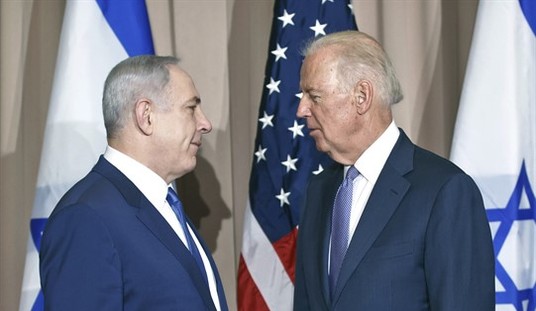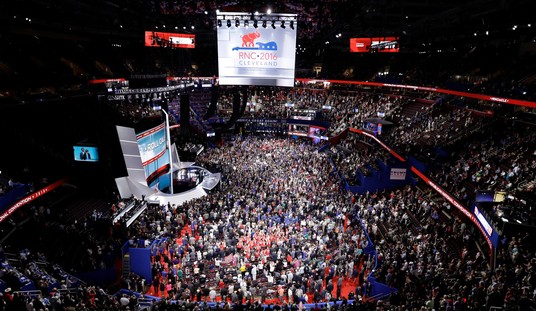While a horrified world watches the images coming out of Kenya in the aftermath of the massacre at a Nairobi mall perpetrated by Islamic fundamentalists, another less bloody but just as morally reprehensible atrocity unfolded online: the sickeningly biased coverage of the attack produced by some mainstream media outlets determined to provide cover for the jihadists.
The BBC’s lead story this afternoon was almost a study in journalistic malfeasance: an archetypal example of how left-leaning Western journalists will violate their own consciences — and the basic principles of reporting — in their relentless quest to hide the truth.
Such bias happens every day, and complaints about it happen just as often, but the sheer volume and speed of partisan reporting makes it difficult to highlight a single example. Even so, let’s pause for just a moment and dissect this typical specimen of ideological media spin.
The article under discussion can be found here — at least for now. Since media outlets often delete articles which they later find embarrassing, I can’t guarantee it will be online forever, so to preserve the evidence I took a screenshot, which you can see here.
Sections of the screenshot are pasted in below as illustrations.
How the BBC Intentionally Obfuscates the Facts
In traditional reporting, all the vital information in any news story should be featured right at the beginning, in an article’s three key elements:
- The headline
- The lede
- The nut graf
Everyone knows what a “headline” is, but the other two terms are journalists’ lingo:
The “lede” in any story is generally defined as its first sentence. In a human interest feature story it’s allowable for the lede to be an anecdote or amusing observation — but in a hardcore news article like this the lede is always supposed to summarize the germane facts of the story. (The headline, of course, should be a condensed version of the lede.)
The “nut graf,” which is short for “nutshell paragraph,” is a single paragraph which gives all relevant information in a further elaboration of the lede. As expected, in news reporting the “nut graf” is always supposed to be the first paragraph of any story (although in feature journalism, which is not what we’re discussing here, the nut graf can appear later in the story).
So, what are the essential pieces of information about today’s Kenya incident? Most everyone (including the perpetrators) would agree that:
Islamic fundamentalist terrorists purposely targeted an exclusive mall in Nairobi frequented by non-Muslims in order to massacre infidels.
So: How does the BBC communicate this information to its readers in its headline? Behold:

Right off the bat, even in the headline itself, the BBC commits a litany of egregious and inexcusable journalistic errors.
The first and most obvious blunder is the missing subject. Who did what? Well, according the the BBC, an entity called a “shoot-out” committed mass murder in Nairobi. Note how there are no human actors in the headline. It wasn’t people who killed 11, it was an inanimate and leaderless “shoot-out” that killed 11.
This is a basic grammatical snafu which even freshmen journalism students quickly learn to avoid. But not the BBC, apparently.
On a second, more subtle, level, use of the word “shoot-out” implies that there were two equal combatants involved, and that therefore blame can be spread around to everyone. But as we know, it wasn’t at first a “shoot-out” — it was a group of terrorists massacring unarmed non-Muslims. (Only much later, after police arrived, did it devolve into a shoot-out.)
Since the BBC has been one of the world’s leading media outlets for nearly a century, and in previous generations set the global standard for news-writing guidelines, they have absolutely no excuse for writing a headline like that — they can’t claim “We’re new at this kind of thing” or “We’re just bloggers — cut us some slack.” No. The BBC literally wrote the book on how to write proper headlines. And if they write a poor headline like this, it must be on purpose.
Before we get to the “Why?” part of the analysis, let’s continue on to the BBC’s lede and nut graf. Surely they conveyed the crucial information the world needed to know — right? Hmmmmm:

Neither the lede, nor the nut graf, nor the two subsequent paragraphs mention terrorism, Islamic fundamentalism, the reason for the attack, that non-Muslims were targeted, nor any other of the truly germane facts about the incident.
Instead, a bizarre and inaccurate outlier quote about the attackers being “armed criminals” is highlighted. Why? There can be no other explanation other than the BBC is trying to obfuscate the facts.
Studies have shown that most news consumers only read the headline; the few that continue on to the body of the story only read the first paragraph or two. Only a small percentage of news consumers get further than that into the full text of the article. And it is this key detail that the BBC is relying on. They purposely suppress the crucial information from appearing in the headline, in the lede, and in the nut grafs, knowing full well that most people will stop reading after that point.
Right around this stage in the article the BBC changes gears, and having successfuly hidden the truth from the majority of its readers, it enters into what might be termed “cover our ass” mode, in which little by little, in inverse order of importance, they leak out the actual facts, so that if their deception is later noted and criticized, they can claim that they did reveal the truth, albeit later in the report.
Thus, the subsequent paragraphs once again fail to mention Islam or terrorism, but start flirting with the facts:

Here, we finally get the terms “Al Qaeda” and “Al-Shabab” and “Arabic,” but stop short of actually describing the ideology or motivation for the attack.
Then, predictably, there is a photo interrupting the narrative, which the BBC editors assume will drive away the few remaining readers, and only after this interruption, in the eighth paragraph, is the only important fact revealed:

In traditional news style, an article is supposed to be structured as a metaphorical “pyramid” of information, with the most important facts stated as concisely as possible at the very top, and with each sentence more details and more elaboration are added.
But in the postmodern BBC “biased reporting style guide,” the pyramid is intentionally inverted, such that the details you want to obscure are hidden so far down in the article that no one will notice them. The only reason to include these details at all is so that, if later criticized, you can truthfully claim that you reported “all the facts.”
The rest of the BBC article confirms this inverted structure, as much later they finally get around to mentioning the word “terrorism.”
Why?
The real question remains unanswered: Why would the BBC (and innumerable other politically correct media outlets) purposely engage in bad journalism? One must assume that the atheist or nominally Christian BBC reporters in their London offices have no desire to live in a world controlled by Islamic law, nor are they themselves bloodthirsty killers, nor are they members of terrorist organizations. Why then would they go to so such lengths, on a daily basis, to provide cover for Islamic terrorists trying to bully the world into submission through brutality and bloodshed?
One can only speculate. One likely answer is fear: They’re afraid that if they make Muslim terrorists “look bad,” then the infidel reporters (or their offices) will be targeted. But I think the answer is a bit more complicated: The progressive worldview promoted by the BBC and their ilk rests on the notion that first-world nations are oppressors and third-world people are victims, and any incident — such as this one — which undermines this hypothesis must be suppressed. Thus, any time Islamic fundamentalists commit an act of violence, the Western politically correct media does its best to ignore, shrug off or (as we see here) intentionally misreport what happens.
And the next time someone asks for evidence of media bias, send them a link to this essay.
[Note: Like all news Web sites, the BBC is constantly updated, so that by the time you read this essay, the lead article on the BBC will likely have changed to a new one with fresh information, emerging new details, etc. Obviously it would be impossible to analyze each variant of their lead article as it appears; all this essay purports to do is freeze a moment in the ever-shifting news stream and dissect the bias of that moment.]








Join the conversation as a VIP Member